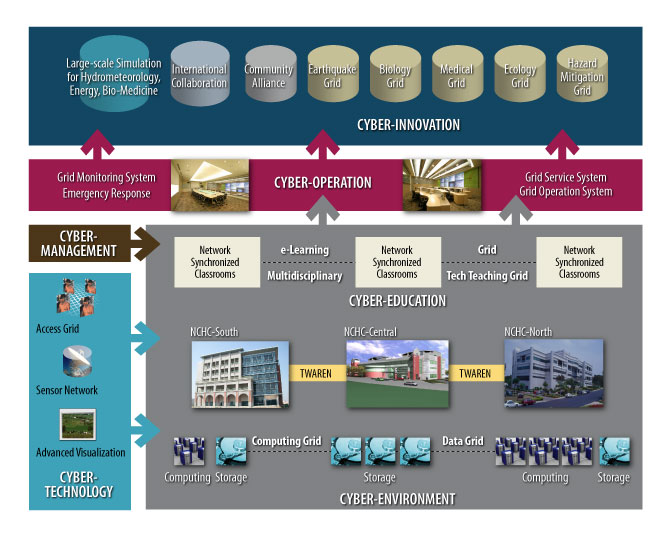The NCHC is the only national-level center in Taiwan dedicated to high-performance computing and networking research and services. The NCHC is also responsible for Taiwan's Cyberinfrastructure plan. Taiwan's Cyberinfrastructure plan was developed considering how to conduct successful applications and innovations (Figure 3). The term Cyber-resource refers to core HPC resources such as high-performance computing, high-end networking, and data storage. Cyber-technology includes technologies such as real-time communication, Sensor Network, and advanced visualization. The NCHC integrates Cyber-resources and Cyber-technologies to create Cyber-environments that ensure scientists and engineers can easily access these resources and technologies. Moreover, the Cyber-environment integrates distributed computing and data storage resources into computing Grid and data Grid to enable information integration and resource sharing. The Cyber-resource, together with Cyber-technology, attempts to build a comprehensive environment to meet users' demands for intensive and pervasive computing. International standards of quality management must be met if the Cyber-environment is to guarantee a high quality service. The Grid operation center is the key component of the NCHC's Cyber-operation. The Grid operation center encompasses a Grid monitoring system, emergency response system, Grid service system, and Grid operation system. The success of the Cyberinfrastructure can be measured by observing the users' performance. The four categories of innovation supported by Cyber-innovation are 1) large-scale simulation, 2) human-life related Grids applications, 3) community alliances and, 4) international collaborations. The Cyberinfrastructure plan may be modified in accordance with users' needs and technology advancement.







